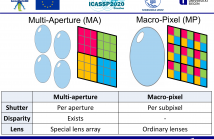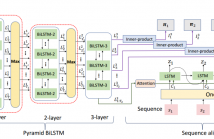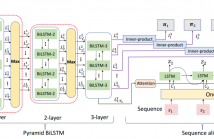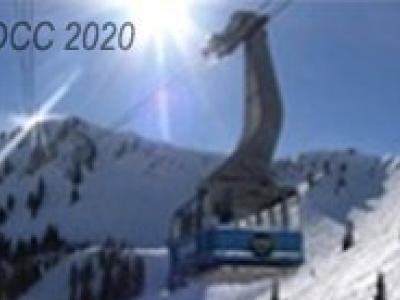- Image/Video Storage, Retrieval
- Image/Video Processing
- Image/Video Coding
- Image Scanning, Display, and Printing
- Image Formation

- Read more about Single-Shot Real-Time Multiple-Path Time-of-Flight Depth Imaging for Multi-Aperture and Macro-Pixel Sensors
- Log in to post comments
Multiple-Path Interference (MPI) is a major drawback of Time-of-Flight (ToF) sensors. MPI occurs when a ToF pixel receives more than a single light bounce from the scene. Current methods resolving more than a single return per pixel rely on the sequential acquisition of large amounts of data and are too computationally expensive to deliver depth images in real time. These factors have precluded the development of a multiple-path ToF camera to date. In this work we consider two hardware alternatives that can be used to acquire all necessary raw data in a single shot.
- Categories:
 105 Views
105 Views
- Read more about COMPARE LEARNING: BI-ATTENTION NETWORK FOR FEW-SHOT LEARNING
- Log in to post comments
Learning with few labeled data is a key challenge for visual recognition, as deep neural networks tend to overfit using a few samples only. One of the Few-shot learning methods called metric learning addresses this challenge by first learning a deep distance metric to determine whether a pair of images belong to the same category, then applying the trained metric to instances from other test set with limited labels. This method makes the most of the few samples and limits the overfitting effectively.
- Categories:
 61 Views
61 Views
- Read more about EXPOSURE INTERPOLATION VIA HYBRID LEARNING
- Log in to post comments
Deep learning based methods have become dominant solutions to many image processing problems. A natural question would be “Is there any space for conventional methods on these problems?” In this paper, exposure interpolation is taken as an example to answer this question and the answer is “Yes”. A new hybrid learning framework is introduced to interpolate a medium exposure image for two large-exposure-ratio images from an emerging high dynamic range (HDR) video capturing device. The framework is set up by fusing conventional and deep learning methods.
- Categories:
 35 Views
35 Views- Read more about COMPLEX PAIRWISE ACTIVITY ANALYSIS VIA INSTANCE LEVEL EVOLUTION REASONING
- Log in to post comments
Video activity analysis systems are often trained on large datasets. Activities and events in the real-world do not occur in isolation, instead, they occur as interactions between related objects. This work introduces a novel method that jointly exploits relational information between pairs of objects and temporal dynamics of each object. The proposed method effectively leverages a new simple architecture that is flexible and easily trained to detect relational activities and events using small datasets (hundreds of samples).
- Categories:
 14 Views
14 Views
- Read more about Key Action And Joint CTC-Attention Based Sign Language Recognition
- Log in to post comments
Sign Language Recognition (SLR) translates sign language video into natural language. In practice, sign language video, owning a large number of redundant frames, is necessary to be selected the essential. However, unlike common video that describes actions, sign language video is characterized as continuous and dense action sequence, which is difficult to capture key actions corresponding to meaningful sentence. In this paper, we propose to hierarchically search key actions by a pyramid BiLSTM.
- Categories:
 56 Views
56 Views
- Read more about Key Action And Joint CTC-Attention Based Sign Language Recognition
- Log in to post comments
Sign Language Recognition (SLR) translates sign language video into natural language. In practice, sign language video, owning a large number of redundant frames, is necessary to be selected the essential. However, unlike common video that describes actions, sign language video is characterized as continuous and dense action sequence, which is difficult to capture key actions corresponding to meaningful sentence. In this paper, we propose to hierarchically search key actions by a pyramid BiLSTM.
- Categories:
 92 Views
92 Views
- Read more about Efficient Storage of Images onto DNA Using Vector Quantization
- Log in to post comments
The archiving of digital data is becoming very challenging as conventional electronic devices wear out in time leaving at stake any data that has been stored in them. Therefore, data migration is necessary every 5-10 years. A great percentage of this stored data is "cold", which means that it is very rarely accessed but needs to be safely stored into back-up drives for security and compliance reasons. Unfortunately, the maintenance and replacement of back-up tape drives in big data centers is very expensive both in terms of money and energy.
- Categories:
 80 Views
80 Views
- Read more about MODEL-INDEPENDENT RATE CONTROL FOR INTRA-CODING BASED ON PIECEWISE LINEAR APPROXIMATIONS
- 1 comment
- Log in to post comments
- Categories:
 30 Views
30 Views
video can be found at here:
https://drive.google.com/file/d/1taJnhOmYtOVfBFPNkwAsIXg_itYW5Xn1/view?u...
- Categories:
 92 Views
92 Views
- Read more about Linear Model based Geometry Coding for Lidar Acquired Point Clouds
- Log in to post comments
- Categories:
 68 Views
68 Views